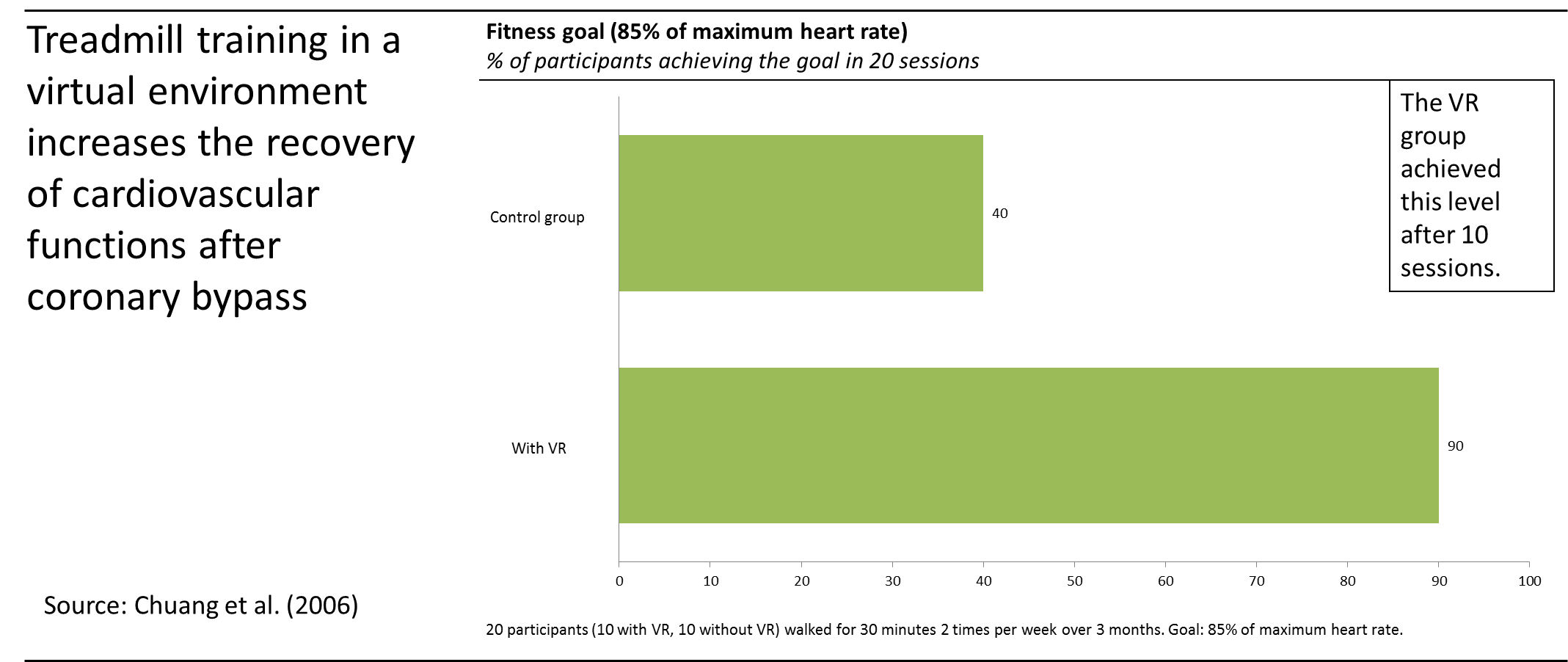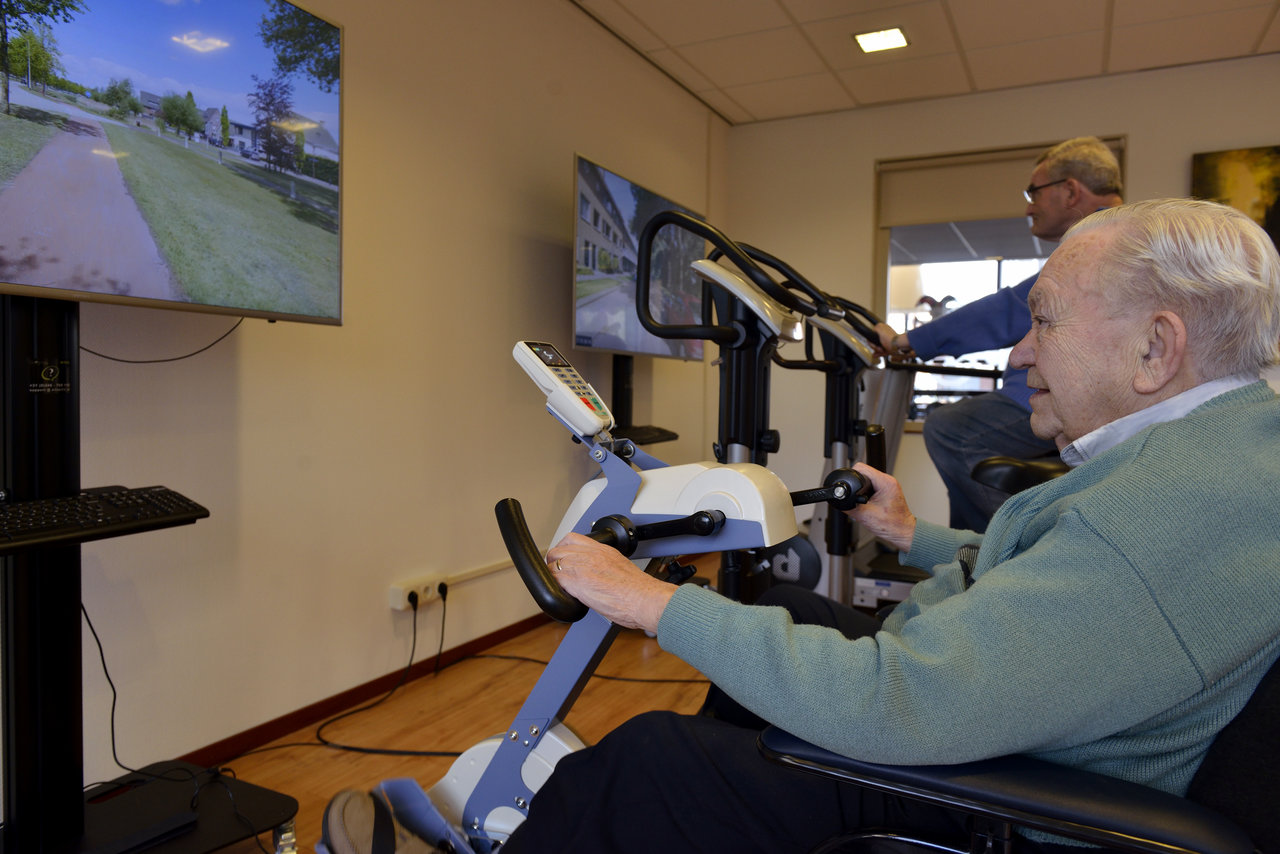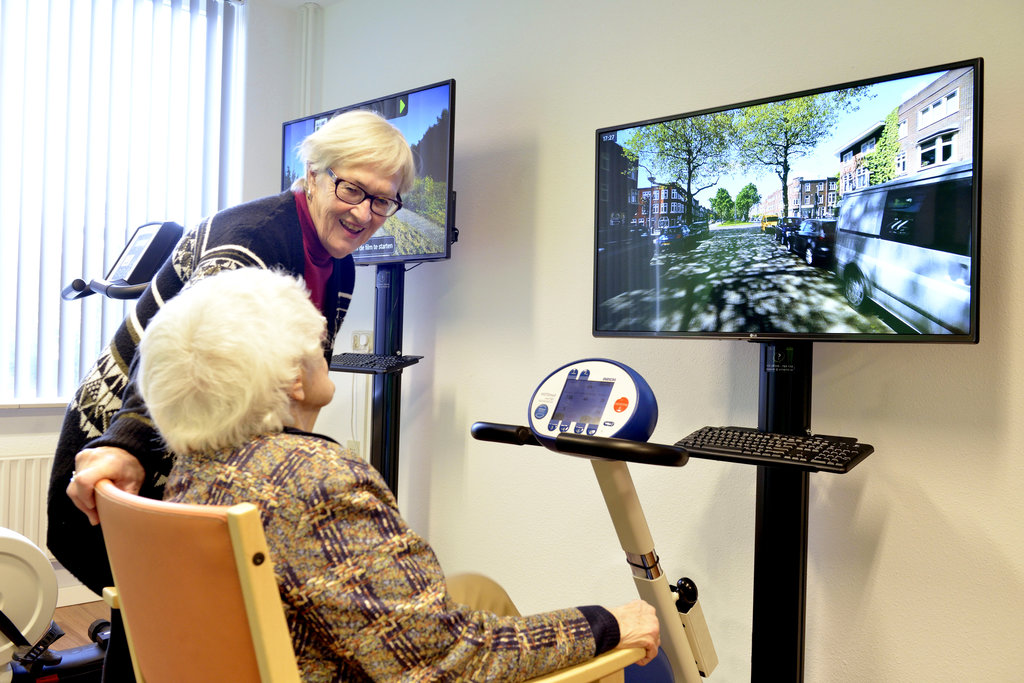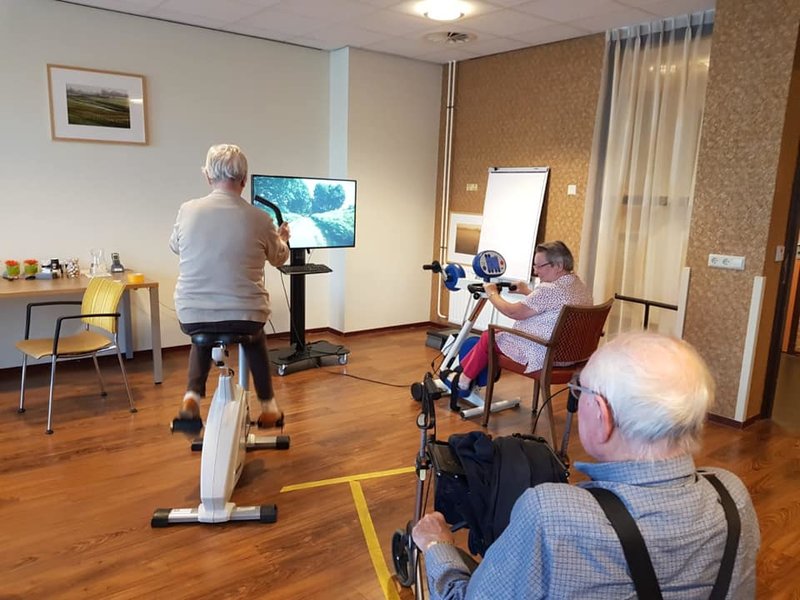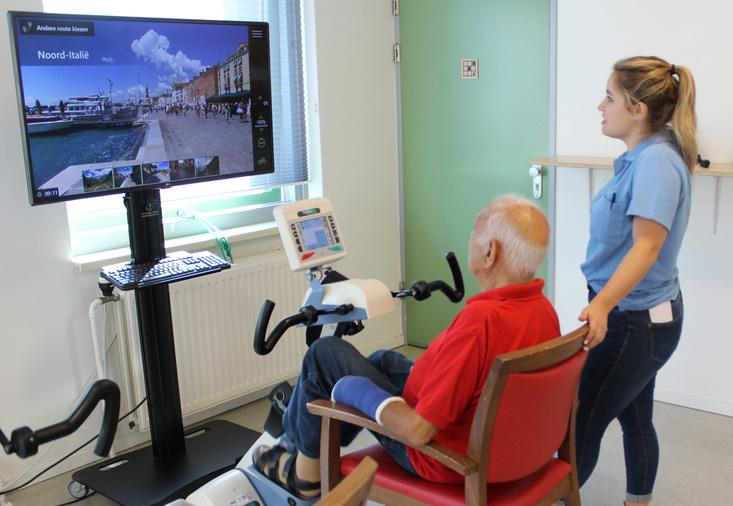Evidence based
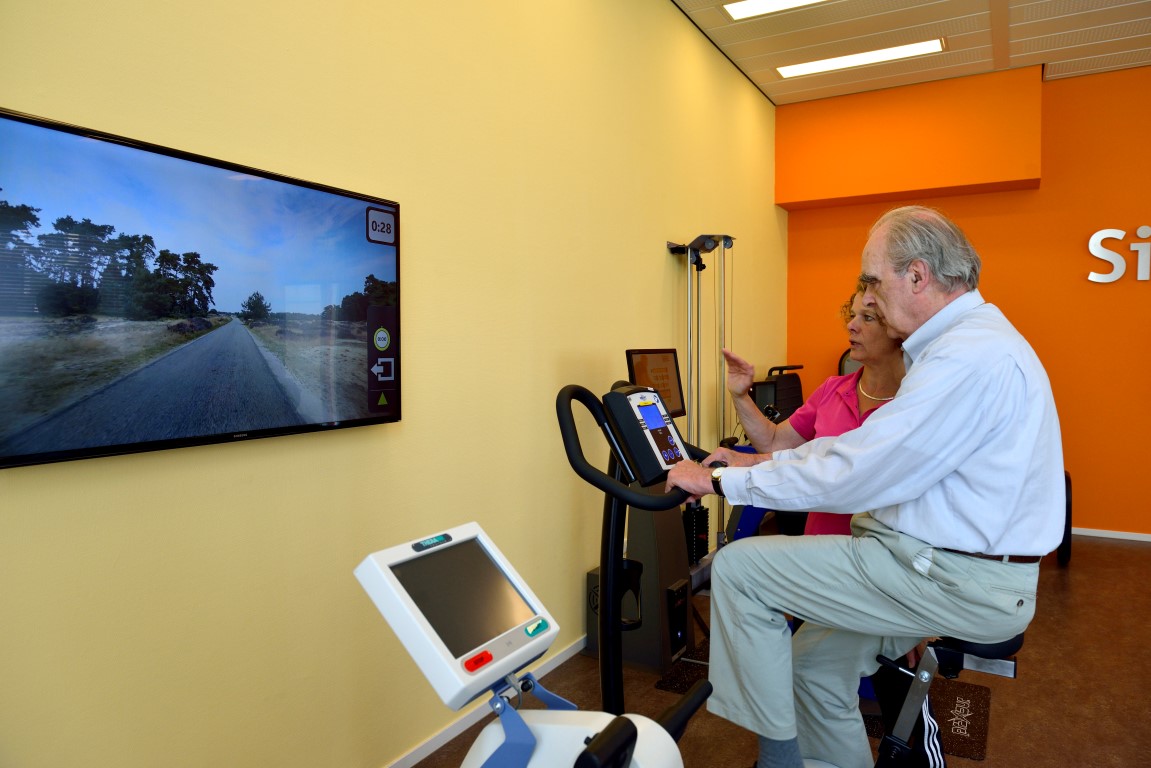
Virtual therapy for walking or cycling leads to better results on cognitive tests and balance parameters, higher exercise adherence, quicker achievement of training goals; and in addition, people enjoy it much more.
Cognition
A study by Anderson-Hanley et al. (2012) explored the effect of exercise on cognitive function in older adults. They looked specifically at executive functions such as planning and divided attention. To identify this effect, three tests were used. The results (see the below figure) show that the group that cycled with virtual images (with VR) showed a significantly better cognitive performance than the control group.
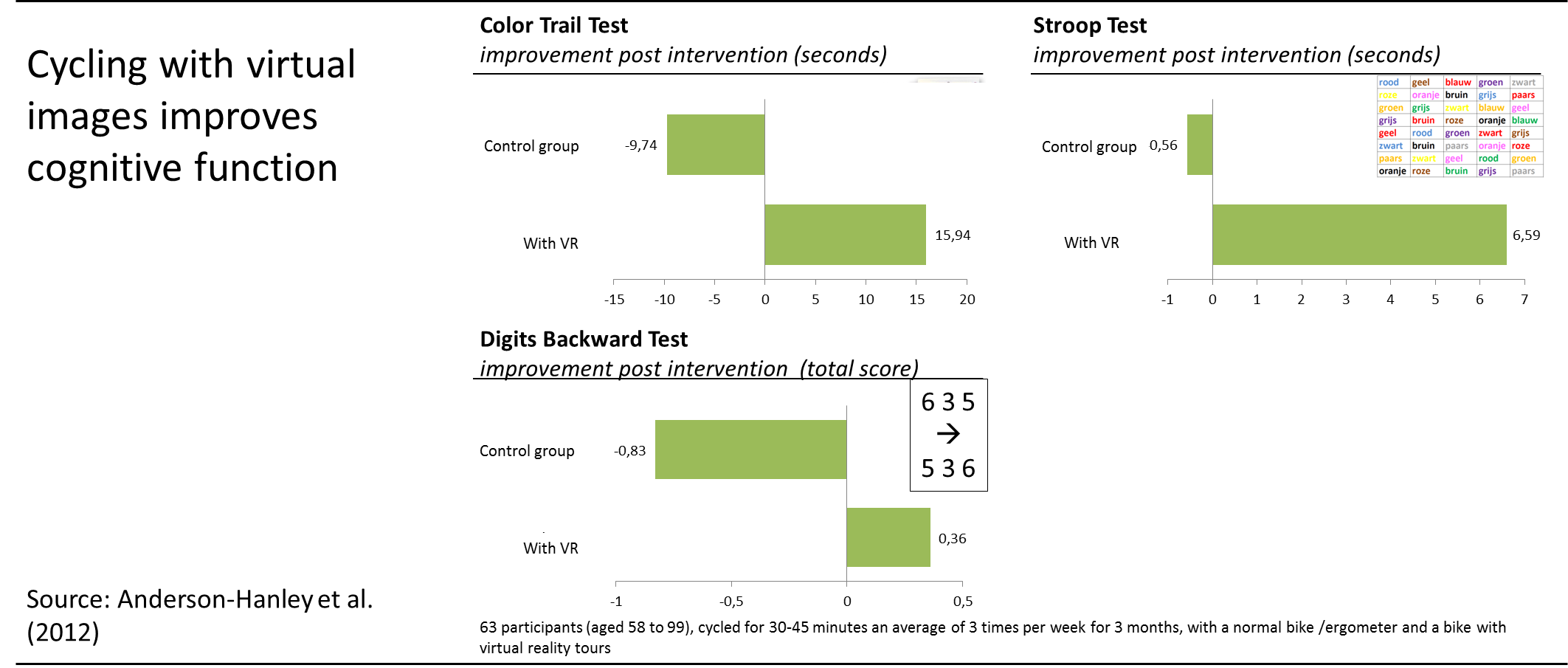
Exercise adherence
The study by Rhodes et al. (2009) into cycling with and without video games showed that exercise adherence was higher when cycling with video games compared to cycling without video games. The study showed that this higher exercise adherence was caused by the fact that the participants found training with the video games to be more fun.
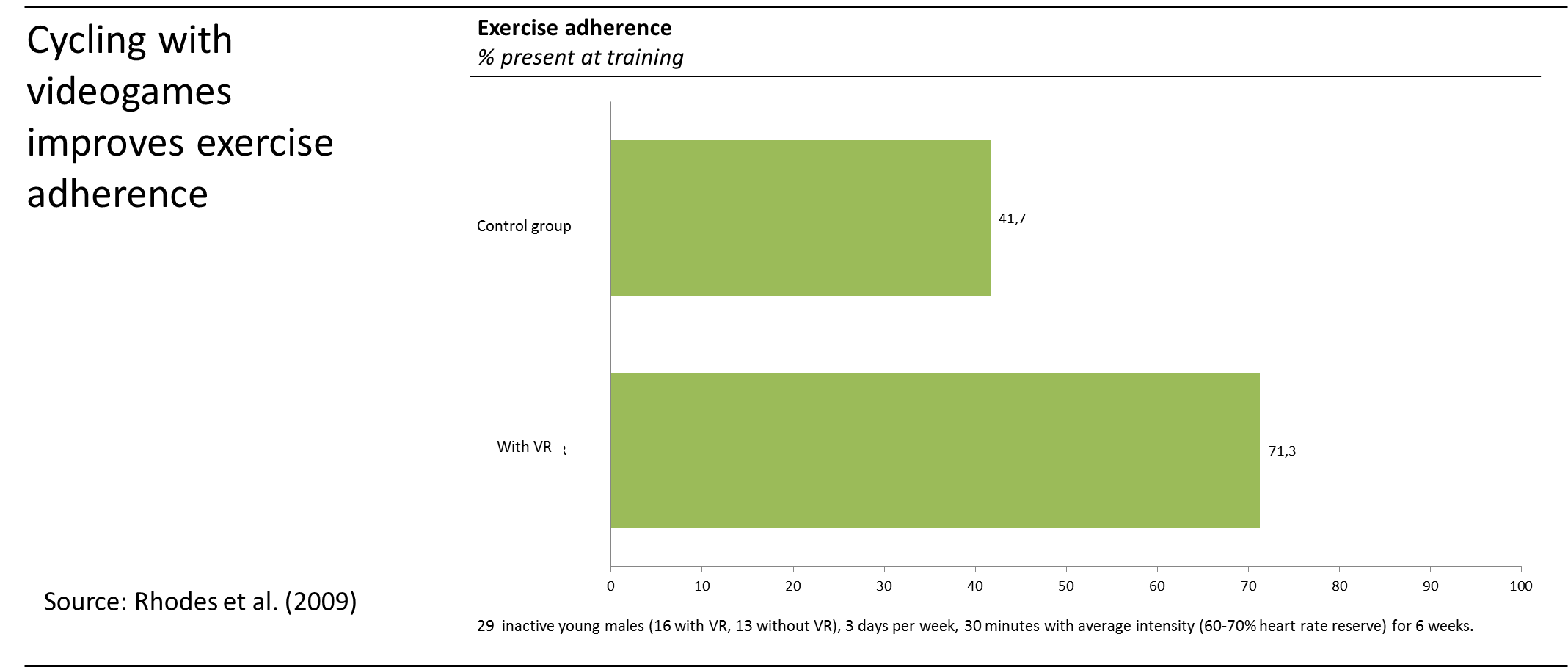
Balance
Cho and Lee (2014) showed that using virtual images has a positive effect on balance during walking. Compared to the control group, the VR group scored significantly better after the intervention with regard to the parameters and test, shown below.
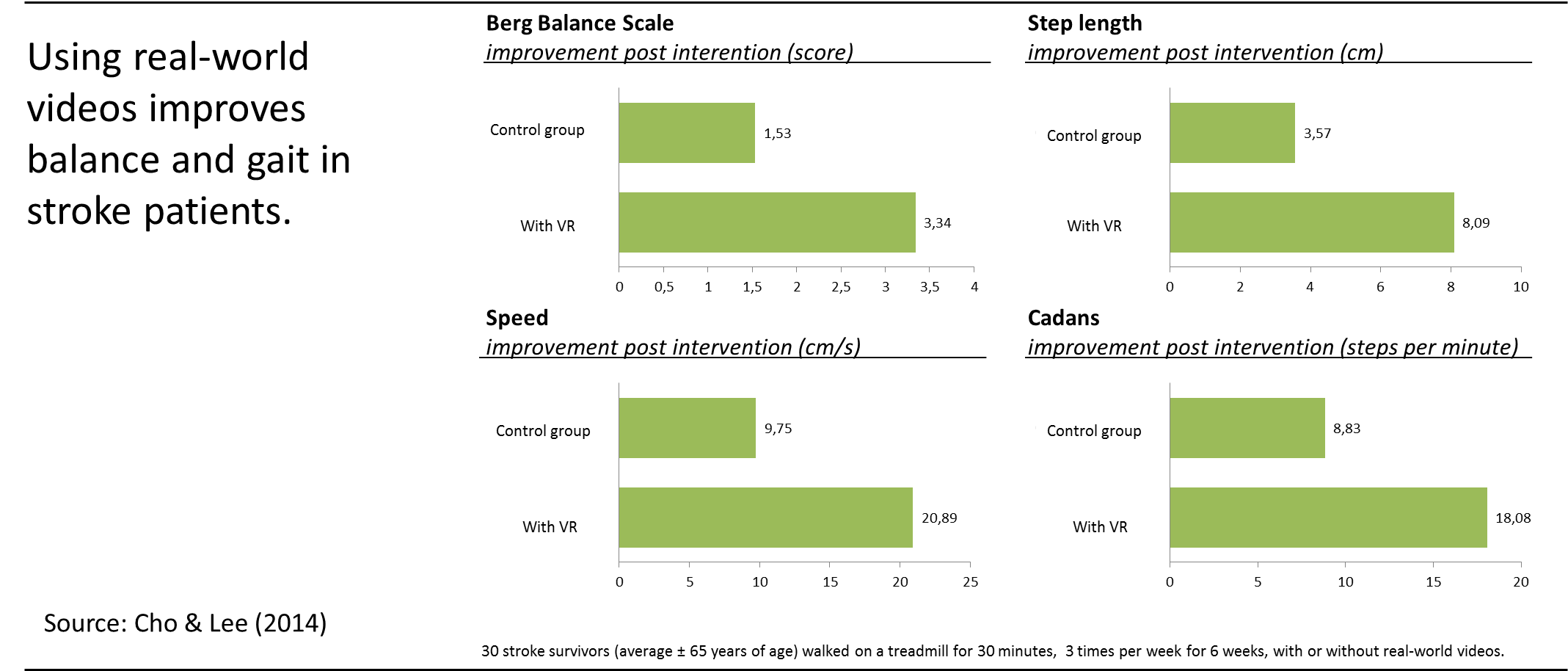
Cardiovascular function
Chuang et al. (2006) showed that walking with virtual images function has a positive impact on achieving fitness goals. After a coronary bypass, one of the training goals was to reach 85% of maximum heart rate. After 20 training sessions, it was observed that less than half of the control group had achieved this. However, almost all of the VR group achieved this goal. Moreover, the VR group achieved this after 10 training sessions.
Exertion and enjoyment
Feenstra (2013, unpublished) studied the effects on exertion enjoyment while cycling with or without virtual images using the SilverFit Mile. The results show that patients enjoyed cycling with images much more than without. The addition of virtual images to cycling in most cases improved exertion tolerance as well.
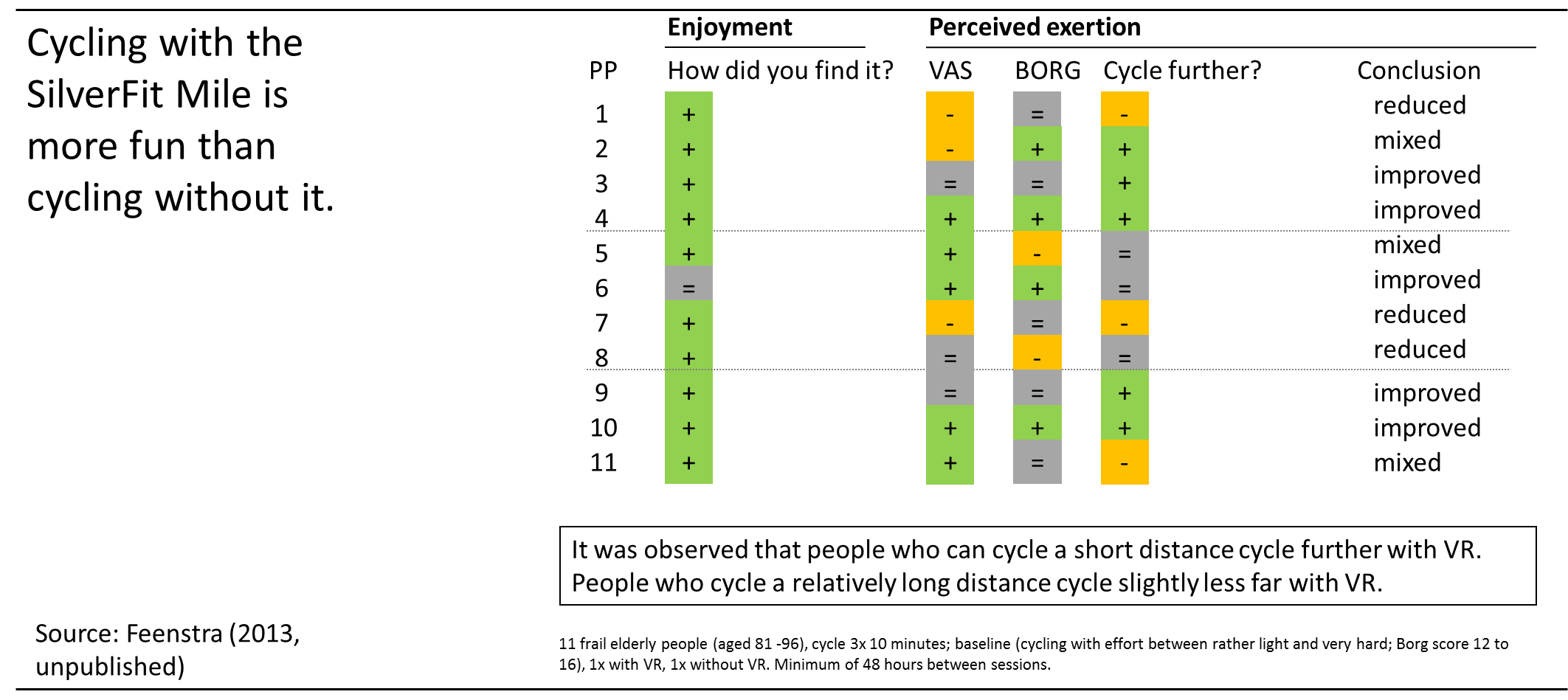
Avoid risks
There is a number of research done to the effect of video images on balance and equilibrium. Every research stresses the importance that the images connect closely to the subjective movement experience. Research done by Nishiike (2013) for example, analysed the speed of the film and pointed out undesired movements of a video. Especially movements in which the horizon rotates too much or gets shaky and wobbly can cause a nauseous feeling similar to seasickness. Bonato (2009) describes this effect with healthy 19-year-old participants.
SilverFit has therefore developed a specific methodology to avoid this kind of shaky movements. A film is recorded with a scoot mobile that is adapted for this purpose and uses a self-stabilizing camera. Furthermore, all images are edited afterwards with stabilisation software and tested by a person who is highly sensitive herself for the above-described effect. In this way, we can be sure that the videos we record do meet the very strict requirements of a medical device
Literature
- Anderson- Hanley, C., Arciero, P.J., Brickman, A.M., Nimon, J.P., Okuma, N., Westen, S.C., Merz, M.E., Pence, B.D., Woods, J.A., Kramer, A.F. & Zimmerman, E.A. (2012). Exergaming and older adult cognition: a cluster randomized clinical trial. American Journal of Preventive Medicine 42(2): 109-119
- Bonato, F., Bubka, A., & Palmissiano, S. (2009), Combined pitch and roll and cybersickness in a virtual environment. Aviation, Space and Environmental Medicine 80 (11): 941-945
- Cho, K.H. & Lee, W.H. (2014). Effect of treadmill training based real-world video recording on balance and gait in chronic stroke patients: a randomized controlled trial. Gait & Posture 39: 523-528
- Chuang, T.Y., Sung, W.H., Chang, H.A. & Wang, R.Y. (2006). Effect of a virtual reality-enhanced exercise protocol after coronary artery bypass grafting. Physical Therapy 86: 1369-1377
- Feenstra, A. (2013, not published). Onderzoek naar belastbaarheid op de fiets mét en zonder SilverFit Mile bij kwetsbare ouderen
- Nishiike, S. et al., (2013). The effect of visualvestibulosomatosensory conflict induced by virtual reality on postural stability in humans. Journal of Medical Investigation 60 (3-4): 236-239
- Rhodes, R.E., Warburton, D.E.R. & Bredin, S.S.D. (2009). Predicting the effect of interactive video bikes on exercise adherence: an efficacy trial. Psychology, Health & Medicine 14 (6): 631-640
 Nederlands
Nederlands  English
English  Français
Français  Deutsch
Deutsch 
